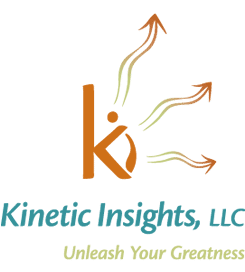One day Alice came to a fork in the road and saw a Cheshire cat in a tree. “Which road do I take?” she asked. “Where do you want to go?” was his response. “I don’t know,” Alice answered. “Then it doesn’t matter.” — Lewis Carroll
As organizations embark on major change initiatives, it is wise to heed the words of the Cheshire cat. In order to consistently act in alignment with the desired future, it is essential that each and every associate impacted by the change has a picture of the future that is understandable and inspirational.
A few months ago as I wrapped up a presentation to a professional association on the topic of change management, an attendee approached me and declared: “We needed you four months ago. We’re embarking on a large-scale change and we skipped the front-end process of preparing and engaging our workforce. No wonder they’re resistant.”
As we talked further, she explained that the leaders had indeed communicated to employees about what changes that were coming and the rational business reason for them, but had neglected to 1) communicate a compelling vision that spoke to both head and heart, and 2) engage employees in determining the best way to achieve that desired future. She went on to say, “It feels like we’re dragging them through wet concrete.”
The high incidence of failure among corporate change efforts is well documented:
- 90% of well formulated strategies fail due to poor execution (Harvard Business School Press)
- 70% of CEO failures come not as result of poor strategy, but of poor execution (Fortune Magazine), and
- 66% of corporate strategy is never executed (Ernst and Young)
So, why do organizational leaders continue to skip the front-end process of preparing the organization for change?
- They think it’s a done deal. After completing the analysis, tweaking the budget and communicating the new direction, they expect managers and employees to accept it and get onboard. They fail to anticipate the impact of insecurity, fear, and complacency.
- It takes a lot of time and energy. Once they’ve invested heavily in the behind the scenes analysis and planning, leaders feel the pressure to move into implementation. Engaging the workforce is messy (one step forward and two steps back) and takes time. Unfortunately, without this ‘warm-up’ phase, the inertia of an unengaged and uncommitted workforce takes even more time.
- They’re more comfortable managing than leading: Kouzes and Posner, creators of “The Leadership Practices Inventory,” discovered in their research of over one million leaders that one of the things leaders struggle with the most is “communicating an image of the future that draws others in – that speaks to what others see and feel.” Oftentimes professionals simply aren’t sure how to paint a vivid picture that sparks buy-in and excitement.
If you’re in a transition phase and it feels like you’re dragging your organization through wet concrete, step back and assess whether you have 1) communicated a compelling vision for change and 2) are engaging your workforce in executing that vision. These two steps are critical for tipping the scale towards success.
At Kinetic Insights, our PathFinders are skilled in helping leaders unleash the greatness in themselves and in their organizations. Call or email us for a quick discussion that just might put you and your team on the path to significant change.
Kristi Thompson, a seasoned professional with more than 25 years experience, devotes herself to aligning people and processes to meet strategic goals with direct impact on an organization’s bottom line.











Leave A Comment